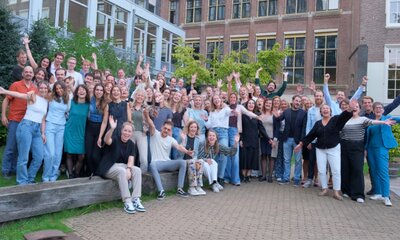AMR: Addressing the current market failure of novel antibiotics in Europe
Antimicrobial resistance (AMR) is a growing global threat that could cause 10 million deaths annually by 20501, making routine medical procedures riskier. Despite the urgent need for new antibiotics, market failures - high R&D costs and low profitability - discourage investment, particularly for small and medium-sized biotech firms. To address this, the EU is considering Transferable Exclusivity Vouchers (TEV), while countries such as the UK and Sweden have tested subscription-based models that reward innovation without relying on sales volume. A hybrid approach combining TEVs and subscription models could incentivize antibiotic development, but joint European action is needed to ensure access and prevent a future health crisis.
In 2028, we will celebrate the 100th anniversary of Alexander Fleming’s discovery of penicillin which has since changed the course of medicine and in particular the therapy of infectious diseases. Yet, these celebrations will likely be overshadowed by the looming global pandemic of antimicrobial resistance (AMR).
Why does AMR present a rising global threat?
AMR is the ability of microorganisms to resist the effects of antimicrobial drugs, such as antibiotics, antivirals, and antifungals. This makes infections harder to treat, leading to prolonged illnesses, higher medical costs, and increased mortality. Forecasts show that AMR could cause an estimated 10 million deaths globally by 20501. The implications of rising AMR are profound, threatening to undermine modern medicine and render routine medical procedures - like surgeries, cancer treatments, and organ transplants - exceedingly risky. Improved hygiene measures, and responsible use of antimicrobials in humans, animals and the environment could slow down the rise of AMR but will not be sufficient to halt the AMR pandemic.
The market failure of novel antibiotics
To fight the emergence of resistant pathogens in humans, novel antimicrobials need to be developed and be accessible to those in need. However, the current pipeline for new antibiotics is alarmingly sparse, with only a handful of promising candidates reaching clinical trials stage. Several factors contribute to this stagnation, including high development costs, regulatory hurdles, and an economic model that disincentivises investment in antibiotics. Unlike medicines for chronic conditions which provide consistent revenue streams, antibiotics are designed for short-term use. Additionally, to prevent overuse and resistance, new antibiotics are used sparingly to prevent resistance, further limiting their commercial potential. This economic reality is particularly daunting for small and medium-sized biotech companies that dominate antibiotic research and development (>80%)2. As long as antibiotics are not priced based on their societal value but on traditional market forces, biotech firms will continue to declare bankruptcy even after launching new antibiotics.
Which ‘pull’ incentives could work?
This systemic market failure underscores the importance of innovative policy interventions which can sustain antibiotic innovation led by SMEs through all stages of research and development up to market access. The model of Transferable Exclusivity Vouchers (TEV) as proposed by the European Commission in its latest revision of the pharmaceutical legislation3 is seen by SMEs as a suitable tool to reward the development of new antimicrobials for several reasons: it can be quickly, simply and centrally implemented; it provides a predictable return on investment; it offers a clear value proposition; and costs for healthcare systems would be acceptable4. However, providing access to new antimicrobials to patients must also be guaranteed and in this respect the United Kingdom’s subscription-based “pull” incentive model and Sweden’s pilot antibiotic procurement strategy have shown promise. These pilot initiatives decouple revenues from volume sales, ensuring developers receive fair returns for their contributions to public health. The UK model, for instance, pays a fixed annual fee to developers based on the value of the antibiotic to the healthcare system, regardless of how much is used. This approach not only incentivises innovation but also aligns with stewardship goals by encouraging judicious antibiotic use.
It’s time for joint European solutions
In conclusion, to truly overcome the barriers to market access and address the current market failure, European policymakers should adopt a hybrid model of pull incentives (TEV and subscription model) which rewards SMEs developing promising novel antimicrobials. This is not an easy endeavour given that health is a national competency and Member States decide about the pricing and reimbursement of medicines individually. However, pathogens which are resistant to existing antimicrobials do not halt at national borders. In finding joint and feasible economic solutions at the right scale, we have much to gain in preventing a devastating global pandemic.
References
- Global burden of bacterial antimicrobial resistance 1990–2021: a systematic analysis with forecasts to 2050. Naghavi, Mohsen et al. The Lancet, Volume 404, Issue 10459, 1199 – 122.
- BEAM Alliance; Reflection paper on the pull incentive mechanisms suitable for SMEs developing AMR products in Europe. January 31, 2022
- Revision of the EU general pharmaceutical legislation
- BEAM Alliance; Reflection paper on the pull incentive mechanisms suitable for SMEs developing AMR products in Europe. January 31, 2022.









